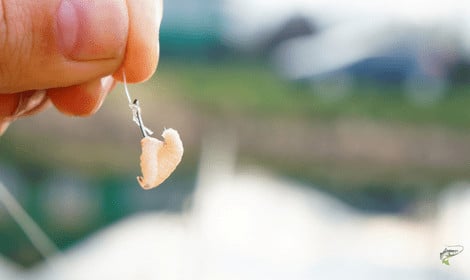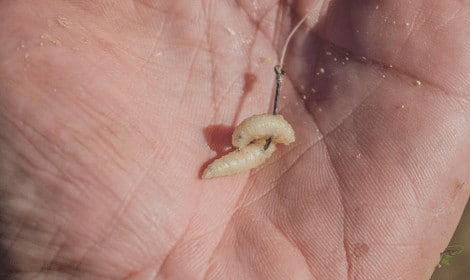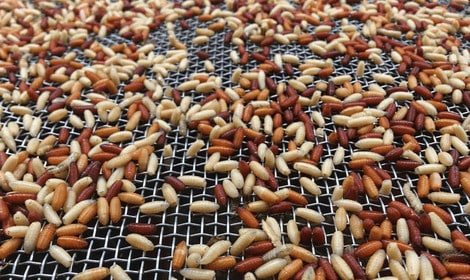
Across all of coarse fishing and even into other angling areas, maggots are one of the most common baits.
Their wriggling movements, natural appearance and protein-dense bodies make for great fish attractors that many species of fish can’t seem to pass up on.
On the carp fishing scene, many anglers will pass up on using maggots to avoid catching the many other “nuisance” silverfish and other coarse fishing in commercial fisheries across the UK.
If you are a keen angler and don’t mind what you catch on a fishing session as long as you catch something, then maggots can be a great choice of bait to put plenty of fish in the net.
How to Put Maggots on a Hook?
There are- many ways that maggots can be hooked, some more effective than others; below, you’ll find a breakdown of the most common ways to hook maggots and the benefits and differences of each.
Maggot Clip
When it comes to carp fishing, one of the most effective ways to hook maggots is to use a maggot clip. This allows you to thread a bunch of maggots onto your rig without hooking them directly on the hook point.
This comes with plenty of benefits.
Using maggot clips with a bunch of maggots and larger hooks, you are much less likely to hook into any small “nuisance” fish and only larger species such as carp will be able to take the rig full of maggots.
If there are a lot of smaller fish around, they will still pluck away at the maggots, so check your rig regularly to ensure you’re not attempting to fish with no maggots attached.
Maggot clips also greatly improve the presentation of your rig. With the maggots not placed directly on the hook, the hook will be able to rotate and move more naturally, and the hook point will not be obstructed, which should result in better hook sets once a fish picks up your bait.
Fishing a bunch of live maggots in this format will also help attract fish as they wriggle and move on the bottom, creating a sort of “bouncing” effect that the carp will be happy to investigate.
As I’m sure you can imagine, this rig is a lot more complicated to tie than simply hooking maggots straight onto a hook, but the process is easily followed through a few steps.
The video below should be all you need.

Through the Head

This is the most common way you’ll see anglers hooking maggots to target all sorts of species. It’s basic, easy to do and still does the job of putting fish in the net.
This method should provide a good hook hold as the head of maggots is usually a little tougher than the body.
The hook point will also be fully exposed to help with hook sets once a fish takes the bait.
Since all of the body is dangling below the hook, the maggot will be able to wriggle freely.
Sideways

This way is a little less common, but some anglers will hook the maggots through the side of the body.
On commercial waters, where some fish may become wise to the common maggot hooking approach and avoid sus looking maggots, this can be a great way to mix it up.
If you through a maggot in the water, you will notice that it will sink sideways. By hooking your maggots like this, they will look at their most natural when sinking, and you might just be lucky enough to pick up a fish as they sink.
Lasso

Another way to attach maggots to a fishing rig is by using a lasso knot. This is a hair rig variant that will allow you to present the maggots without directly putting them on the hook.
This method is fairly uncommon but is a method to keep in mind if you want to try something new that the fish will most likely not be used to seeing.
It’s a straightforward method for presenting a single maggot in a similar way to the maggot clip rig.
It seems to be a lot more effective to fishing a single maggot the conventional way directly on the hook especially when you’re fishing shallow areas.
You can follow the steps in the video above to give it a go.
Casters

Casters, or dead maggots, are another way to hook maggots and should not be avoided. Some anglers swear by their effectiveness; in some cases, they may even work better than live maggots.
These casters can be hooked in the same methods as live maggots, but they obviously won’t wriggle free from your hook naturally.
Casters are a great way to stop your live maggots wriggling and burrowing themselves in the silt if you are fishing over a silty bottom.
Carp will root through the silt looking for foodstuffs, but if you have no maggots above the silt, they will not know the maggots are there, and it will be very unlikely for them to find them.
Using casters, your rig shouldn’t spin as much during the cast, which can help reduce tangles and ensure you are fishing with effective presentation once your rig rests on the bottom.
Casters are also great for fishing on slops to islands or features where live maggots would riggle their way down the sloping terrain taking your rig away from potentially effective swims.
Many anglers also believe casters will help weed out the larger fish in the water as small silver and nuisance fish tend to avoid these dead maggots.
That’s All
Maggots are a great bait for catching all sorts of fish species swimming in the water below you. They are cheap, readily available from most fisheries and tackle stores and should put plenty of fish in the net if fished correctly.
I’m sure you can now see how to put maggots on a hook and the various methods you can use.
With all types of fishing, it’s best to experiment and find what works best for you with the conditions presented in front of you, so make sure you test a few of these hooking methods if some don’t seem to be working for you.
If you have any questions or anything you’d like to add, don’t hesitate to leave a comment below, and I’ll get back to you ASAP.

